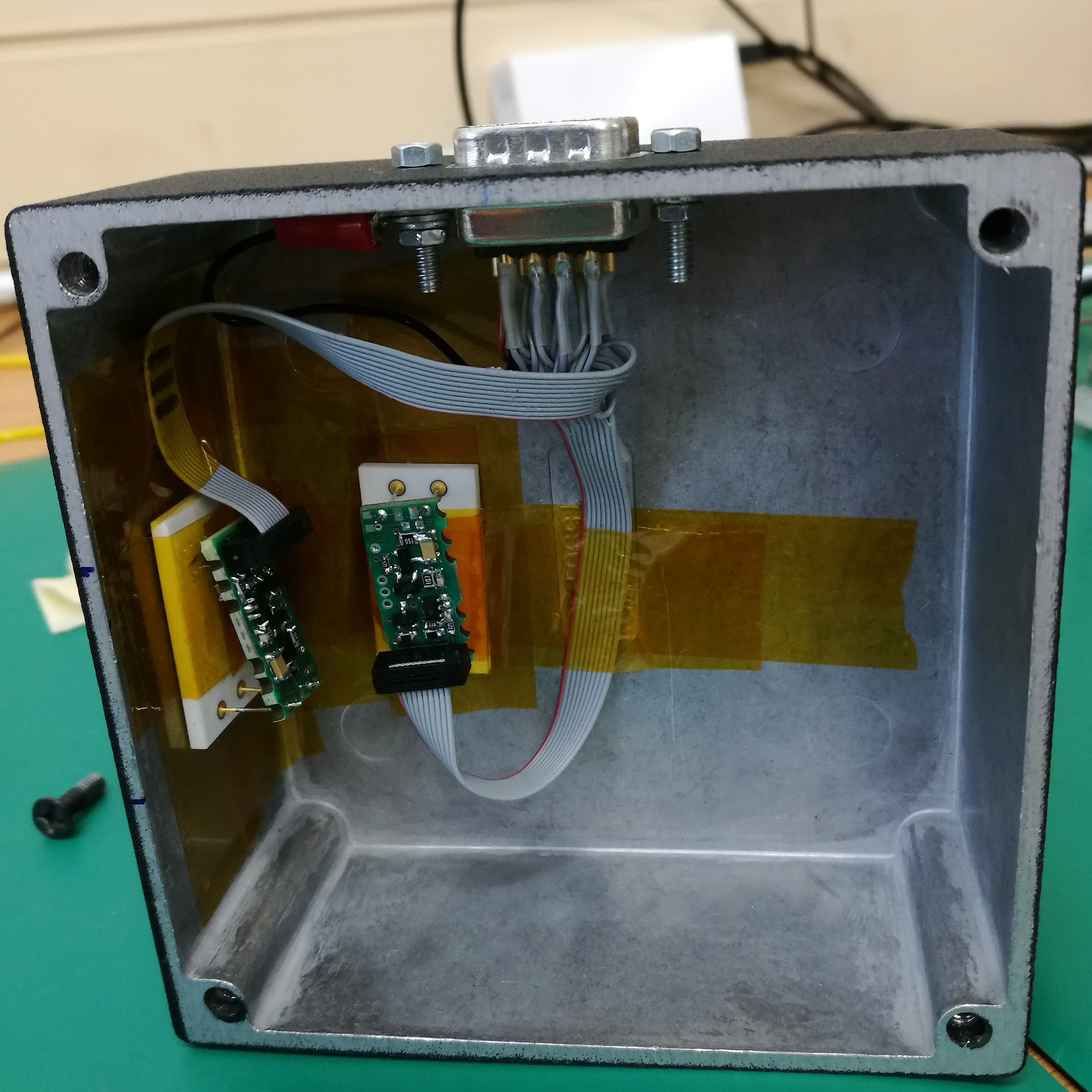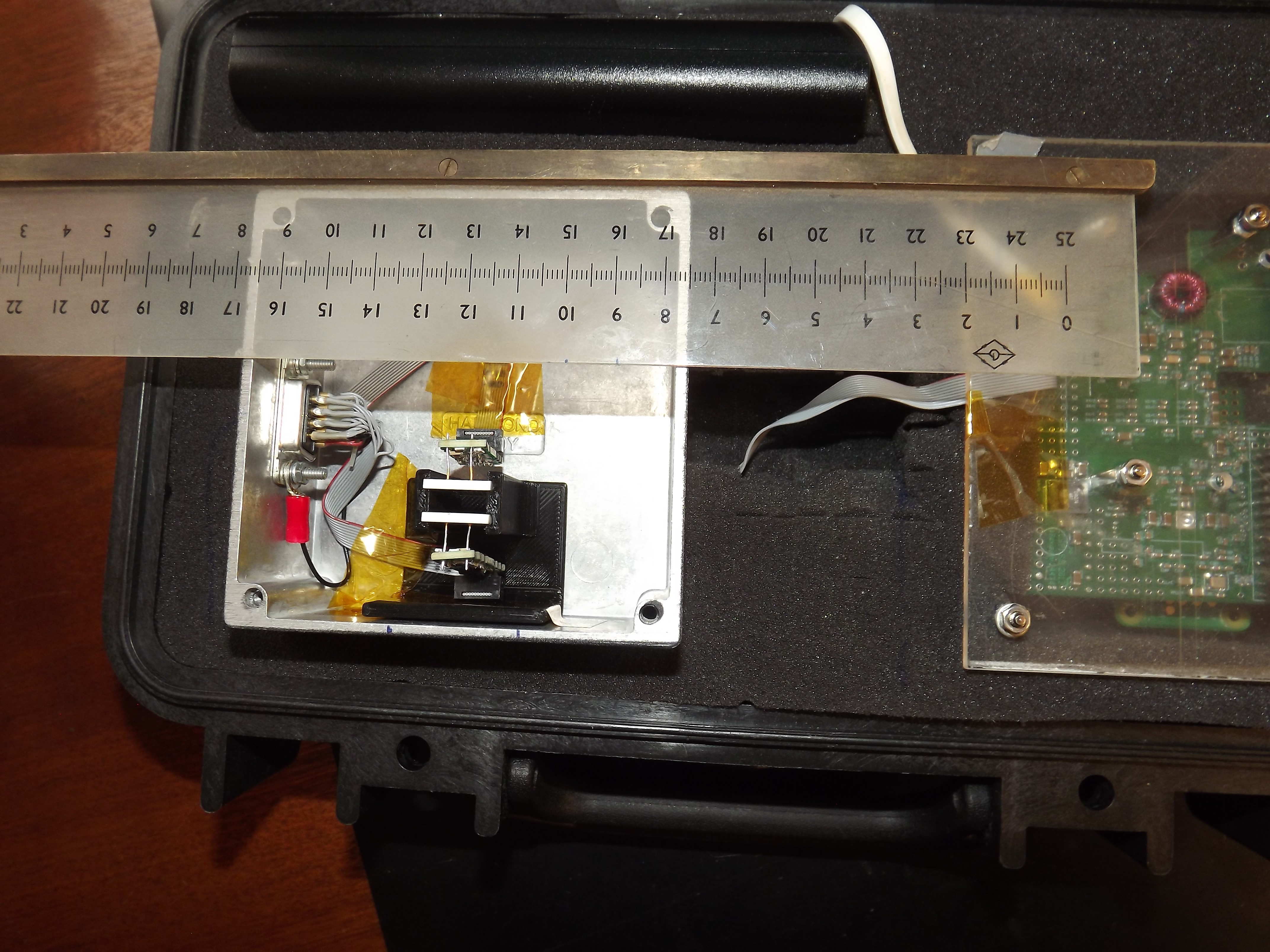The RPiRENA-based active dosimeter
This particle detector works on the same principles as previously assembled dosimeter prototypes. Here, the detection system draws its power from the 3.3 V and 5 V GPIO (general purpose input output) pins from the connected Raspberry Pi (RPi) zero microcomputer, which is in turn powered via a rechargeable power bank.
The instrument draws about 0.4 A of power.
Data processing and storage are also performed on the RPi.

The silicone diodes (SDs) are connected to a reversed bias voltage of 45 V to fullydeplete the 300 lm thick diodes. When ionizing radiation interacts with an SD a short charge pulse is generated due to the separated charges. However, the charge pulse is too small to be sensed directly.

Therefore, the pulse is first sent to the amplifier section of the analog electronics.
Here, a charge-sensitive amplifier (CSA) amplifies the signals before the resulting pulse is shaped (by the pulse-height shaper, PHS), and then it is digitized by a 16-bit analog-to-digital converter (ADC).
A field programmable gate array (FPGA) is programmed to periodically sample the ADC signals and detect the peak voltage (i.e. the pulse height).
Since the pulse height is proportional to the energy deposited, the ADC value is proportional to the energy deposited in the detector after the appropriate calibrations are performed.
 EST Engineering CC
EST Engineering CC
Discussions
Become a Hackaday.io Member
Create an account to leave a comment. Already have an account? Log In.